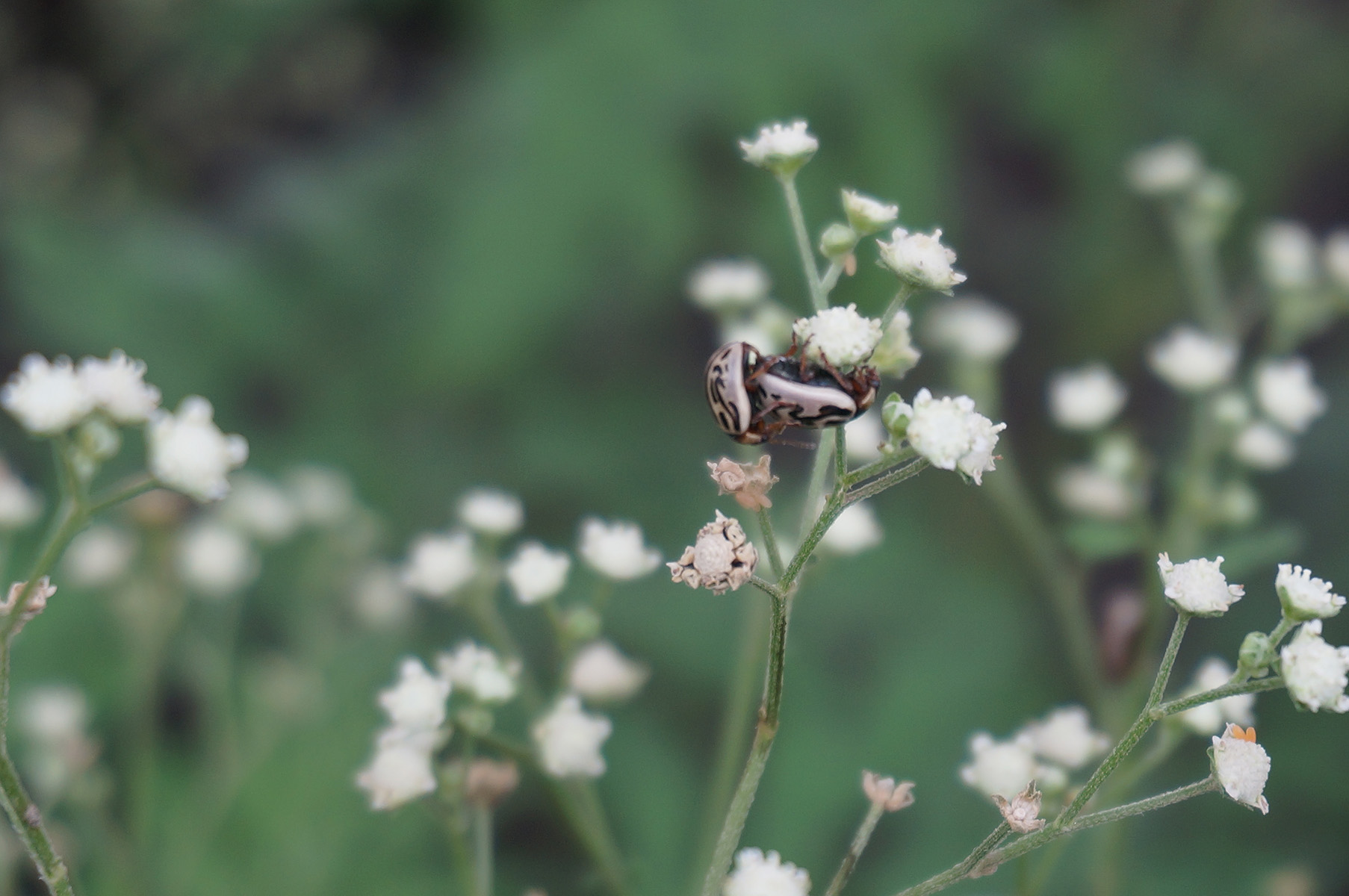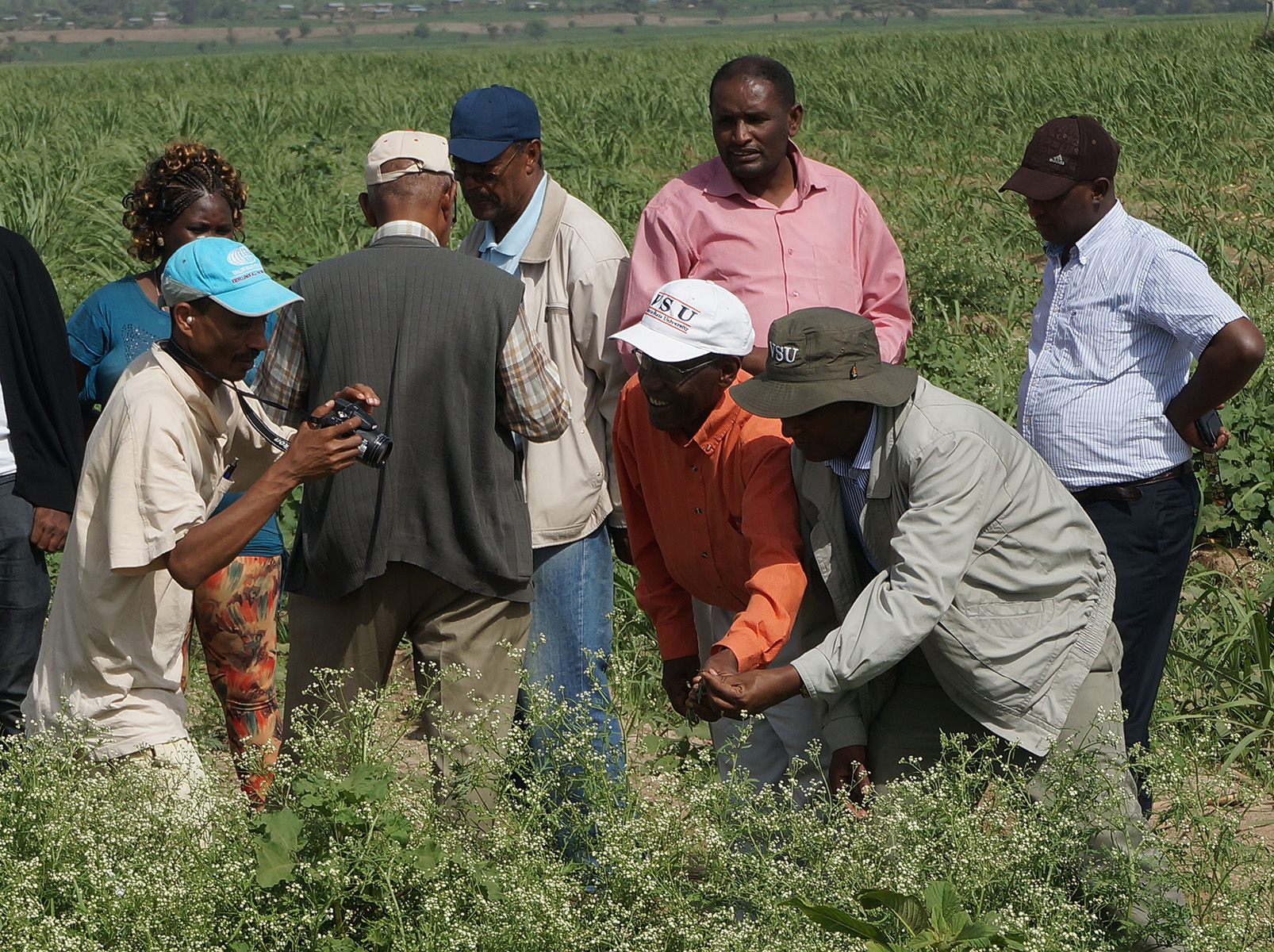Speckled beetle key to saving crops in Ethiopia

An invasive weed poses a serious and frightening threat to farming families in Ethiopia, but scientists from a Virginia Tech-led program have unleashed a new weapon in the fight against hunger: a tiny, speckled beetle.
The weed, called parthenium, is so destructive that farmers in the east African nation have despairingly given it the nickname "faramsissa" in Amharic, which, translated, means "sign your land away." Farmers have doused the weed in pesticides and ripped it out with their hands, but it has only spread further.
After a decade-long effort, scientists from the Integrated Pest Management Innovation Lab released a parthenium-eating beetle called Zygogramma bicolorata.
"Extensive research has shown us that the beetle eats and breeds only on parthenium leaves," said Muni Muniappan, director of the Integrated Pest Management Innovation Lab, a program funded by the U.S. Agency for International Development. "It's been tested in Australia, India, South Africa, and Mexico with similar results."
Parthenium is native to the Americas, where a suite of natural enemies that includes the Zygogramma beetle keeps the weed in check. But in the early 1970s, parthenium entered Ethiopia in shipments of food aid from the United States. With no serious contenders, the plant flourished.
In the past three decades, parthenium has become the second most common weed in Ethiopia, suppressing the growth of all other plants and wreaking havoc in the fields and gardens of smallholder farmers.
"The plant is an aggressive invader. A single plant can produce 25,000 seeds and completes its life cycle in six to eight weeks," said Wondi Mersie, a Virginia State University professor and principal investigator of the Virginia Tech-led project. "It displaces native species, affects human health, and negatively impacts quality of life."
Parthenium is poisonous. People who come into contact with it can suffer from skin irritations, bronchial asthma, and fever. Animals that eat it can experience intestinal damage, and their milk and meat becomes bitter and useless.
The Innovation Lab built a quarantine facility in 2007 to ensure that the pea-sized beetle had eyes for parthenium alone. Testing under quarantine is one of the crucial steps involved in biological control, a rigorously tested method where an invasive species' natural enemies are used to regulate it.
"Opportunities for biocontrol in Ethiopia are huge, and there would be enormous benefits," said Arne Witt, a biologist not associated with the Virginia Tech program who works with UK-based nonprofit CABI.
After a laborious process involving many agencies and much red tape, Zygogramma bicolorata was approved for release. Researchers collaborated with farmers, local government officials, and extension agents to construct a breeding facility and increase the number of beetles.
Finally, on July 16, the Innovation Lab team joined a group of about 30 scientists and farmers in Wollenchitti, Ethiopia, to release the insects. The group moved from parthenium patch to parthenium patch, dumping beetles from containers.
Ethiopian researchers will monitor the sites and assess the impact. As a second step, scientists are poised to release a stem-boring weevil that will join Zygogramma. But even these measures will not eliminate parthenium from Ethiopian farmland.
"Biocontrol is control, not eradication," said Witt. "But it means that a farmer sprays less pesticide. We need an integrated strategy, and biological control is the most cost-effective strategy – let’s embrace it."
The Integrated Pest Management Innovation Lab is managed by the Office of International Research and Education at Virginia Tech.
Dedicated to its motto, Ut Prosim (That I May Serve), Virginia Tech takes a hands-on, engaging approach to education, preparing scholars to be leaders in their fields and communities. As the commonwealth’s most comprehensive university and its leading research institution, Virginia Tech offers 240 undergraduate and graduate degree programs to more than 31,000 students and manages a research portfolio of $513 million. The university fulfills its land-grant mission of transforming knowledge to practice through technological leadership and by fueling economic growth and job creation locally, regionally, and across Virginia.
Written by Kelly Izlar





